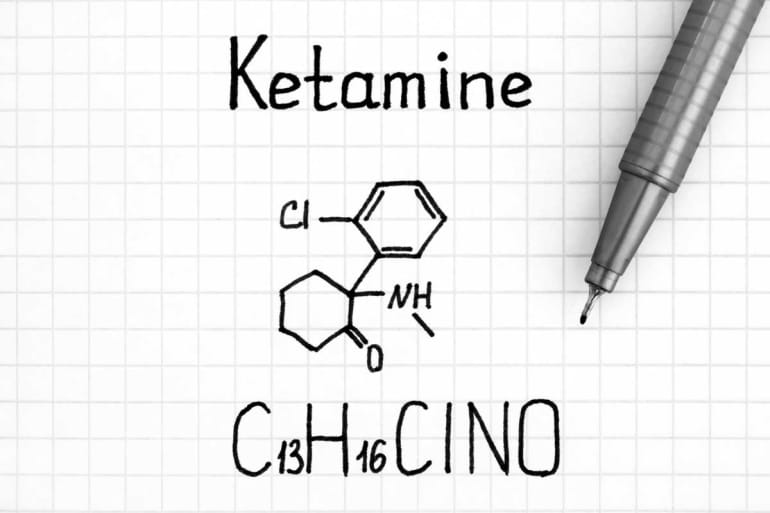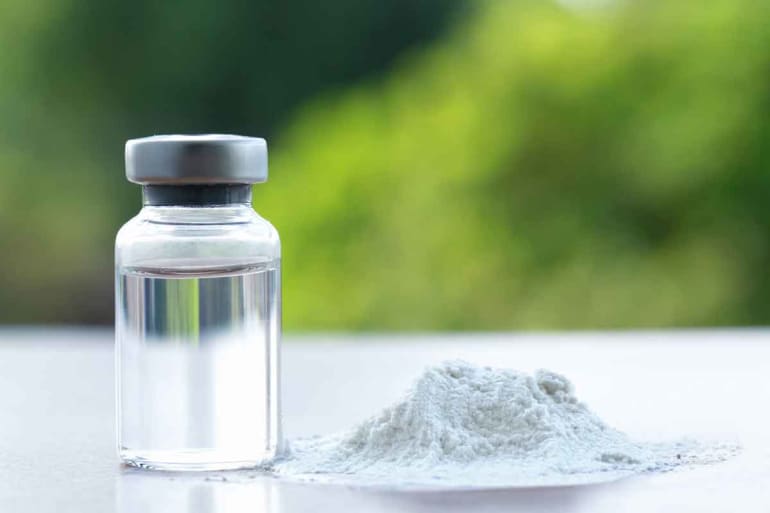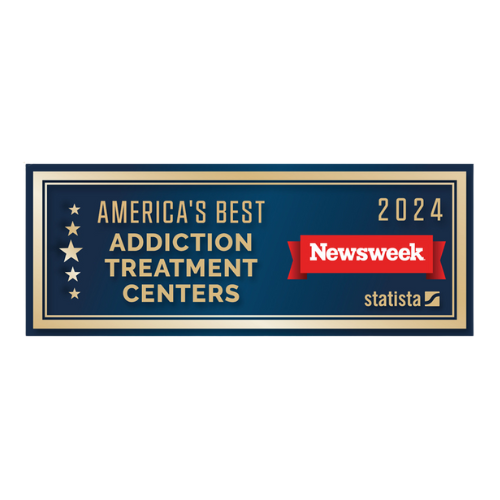What is Ketamine?
Ketamine is a medication that has become a popular club drug over the past few decades. It’s used as an anesthesia and for relaxation or pain relief in medical settings. When used as a recreational drug, ketamine causes extreme hallucinations, disassociation, and tranquilizing effects. Recently it’s also been used as a controversial form of treatment for depression.

Ketamine is a beneficial medication in controlled, medical environments. Low doses ease pain and are a great alternative to stronger alternatives like opioids. It limits the need for painkillers which reduces the possibility of developing an addiction to prescription opioids.
Outside of prescribed medical use, though, ketamine use is dangerous and unpredictable. It can cause problematic mental and physical reactions and long-term use can lead to tolerance and eventual psychological addiction. Ketamine misuse alters the perception of sight and sound and it also decreases reaction time. It can even cause total disconnection from reality.
What is ketamine and how is it used? Why do people turn to this powerful substance for recreational use and when does it go too far? As the president of the American Society of Anesthesiologists, John Abenstein, MD, said, “Outside of the clinic, ketamine can cause tragedies, but in the right hands, it is a miracle.”
Who Discovered Ketamine and When?
Ketamine originated in Detroit, Michigan in the 1950s at the Parke-Davis and Company’s laboratories. Starting with cyclohexylamines, chemists were looking for the ‘ideal’ anesthetic medication that also relieved pain.
One chemist, Maddox, discovered the first process to synthesize phencyclidine (PCP) on March 26th, 1956. Two years later, on September 11th, 1958, pharmacologist Dr. Chen received Maddox’s compound. Along with Dr. Domino, Chen studied the effects of PCP on animals and later humans
After a few years of clinical studies the doctors realized phencyclidine wasn’t a reasonable option as a human anesthetic. Hallucinations were too severe and frequent even with supervised medical use. Research continued in an effort to discover a similar anaesthetic but with fewer PCP-like side effects.
A Parke-Davis chemical consultant, Dr. Calvin Lee Stevens, was the first to synthesize ketamine in 1962. He fused a ketone with an amine, thus its name ketamine. Ensuing studies showed that Stevens’ new compound effectively produced anaesthetic, analgesic, and cataleptic effects, without the undesirable hypnotic effects of PCP.
It was patented for use in both humans and animals in 1966 by Parke-Davis. Human ketamine trials continued through the 1960s and into the 1970s in countries around the world. Teams in Germany, Italy, Brazil, Japan, and the Netherlands contributed literature on their own research on the drug’s effects.
What is Ketamine Made Of?
Ketamine came from the need for a medication that anesthetized patients while also relieving pain. Though PCP was used for a brief time, the unpleasant hallucinations ensured its time as a medical solution was short-lived. Dr. Stevens decided that a series of phencyclidine derivatives would be a beneficial path to explore.
Ketamine is made of a ketone combined with an amine. In chemical forms, it’s noted as Cl-581, or 2-(O-chloro-phenyl)-2-methyl-amino cyclohexanone. This chemical combination created a potent anesthetic and analgesic but one with a much shorter duration and lower potency than its counterpart, PCP.

Prescription opioids are a popular medication used to treat moderate and severe pain. They have developed a notorious reputation over the past two decades, though, for their incredible addiction potential. Learn more about what prescription opioids are and how they affect the people who use them.
More info
Cocaine is a drug notorious for its place in the clubbing and nightlife scenes of major cities throughout the world. What exactly is cocaine, how is it made, where does it come from, and what does it do? Learn more about the impact of cocaine on the body, on society, and more.
More infoChemistry of Ketamine
Ketamine is a derivative of cyclohexanone and is a chiral compound. It’s created from an intensive process involving numerous chemicals. The drug is used in medical settings as an anesthetic, sedative, and analgesic. It also has hallucinogenic properties when misused or abused.
Medical experts still don’t fully understand ketamine’s method of action on the nervous system. It is an effective anesthetic agent for many medical procedures but researchers are still trying to learn about its mode of action.
Recent research from the University of Pennsylvania, conducted by R.G. Eckenhoff, revealed that ketamine interacts with olfactory receptors in mice. They believe their discovery will lead to more anesthetics that target the olfactory receptors. Still, more research on the chemistry of ketamine needs to be conducted.
Is Ketamine Legal?
Ketamine is legal under supervision for specific medical procedures. It’s widely used as a veterinary anesthetic but it’s also a helpful part of human medicine, too. The World Health Organization has included ketamine in its Essential Medicine List since 1985.
Doctors can use it as an anesthetic or analgesic. Used properly, ketamine doesn’t slow breathing or decrease blood pressure, making it one of the most used anesthetics in the world. Overdoses under medical supervision are very rare. Ketamine is also beneficial for patients experiencing inflammation, mild to moderate asthma symptoms, and for depression.
While ketamine is legal for specific medical uses, recreational ketamine use is not legal. It should not be misused or abused and doing so puts users at risk of developing addiction. Its in the club and the rave scene makes it an illicit substance.
Ketamine is a controlled substance with the Drug Enforcement Administration. It’s classified as a Schedule III substance along with drugs like codeine and anabolic steroids. The DEA recognizes its abuse and dependence potential, but also acknowledges its benefits in medical settings.
Are Ketamine Infusions FDA Approved?
Ketamine infusions are a newer medical practice for patients with chronic pain and depression. It’s been in use as part of an alternative form of treatment in ketamine clinics for a few years. It was finally approved to treat depression by the US Food and Drug Administration last March.
FDA approved ketamine infusions to help individuals who don’t respond well to existing treatments. They specifically approved esketamine, the more active half of the ketamine chiral compound. Patients who seek ketamine treatment suffer from severe depression that ordinary modalities aren’t as effective at treating. It offers a fast-acting way to approach treatment.
There is a caveat to their approval, though; clinicians must administer the drug as a nasal spray in certified clinics. Patients must also be actively taking an antidepressant medication. They also need to have unsuccessfully tried two other types of antidepressants before receiving treatment with ketamine.
Can Ketamine Be Prescribed?
Ketamine cannot be prescribed for take-home use and picked up at a local pharmacy like other antidepressant medications. It’s only approved for use in certified ketamine clinics under the supervision of trained medical personnel. At-home ketamine use is considered illicit misuse and is not legal.
Ketamine clinics must undergo a risk evaluation and mitigation strategy program. They require proof of medical licensing as well as approval from the DEA to dispense a controlled substance. Requiring specialized certification ensures that ketamine treatment clinics provide safe and effective care for anyone seeking an alternative solution.
Prescribing ketamine for take-home use still comes with too high a potential for abuse, though. At-home ketamine use may be allowed at some point in the future but for now all patients must receive it via nasal administration at an approved clinic.

Dual diagnosis, or co-occurring disorders, is a difficult and complicated condition to both live with and treat. Find out everything you want to know!
More info
Both substance abuse and mental illness are widely misunderstood. This makes it difficult for people to openly share their struggles. When someone uses drugs heavily and develops mental illness as a result, they find themselves in an even darker place. How can substance abuse lead to mental illness?
More infoKetamine Myths & Facts
There is plenty of misconception and misunderstanding surrounding ketamine. As alternative treatments using the drug grow in popularity, it’s crucial to understand some ketamine myths and facts. Not everything you hear about the substance is true.

It’s difficult to know myth from fact with so much information available on the internet these days. The following breakdown of ketamine myths and facts should clear up some confusion surrounding the drug and its uses.
Ketamine Myths
Ketamine is not/is always addictive
Some believe ketamine is not addictive while others believe using it always leads to addiction. Both of these are myths. There’s no blanket statement that encompasses all use. Not everyone who uses ketamine becomes addicted, either immediately or in the long run. At the same time, developing ketamine addiction is very much possible.
It’s difficult to know whether someone will become addicted to ketamine. The drug affects people differently depending on a few factors. For example, those with addictive tendencies or a history of substance abuse are more likely to develop ketamine addiction. But to say it’s always addictive, or that it’s never addictive, is a myth.
Treatment with ketamine can solve any mental health issues
As ketamine infusion treatments become more popular, some may claim that it can solve any mental health issue. There are no studies or research to back up the claims that ketamine can treat any existing mental illness. Although there is some anecdotal evidence for certain individuals that doesn’t mean their experience applies to the masses.
The best way to treat mental health issues is at specialized treatment facilities. Programs focused on helping individuals manage and overcome their mental illness are proven effective in many studies. They incorporate multiple approaches to treatment rather than relying on a single modality or one-size-fits-all understanding.
Ketamine Facts
Ketamine is used for legitimate medical purposes
Despite its popularity among club-goers and ravers, ketamine is still in use for real medical procedures today. It’s not only used for recreational purposes. It has legitimate medical uses. Ketamine is a powerful anesthetic and analgesic, offering an alternative to opioid painkillers
while in medical treatment facilities.
Doctors use ketamine as an option when anesthetizing patients for surgical procedures to this day. Clinicians still find it beneficial to use despite its classification as a controlled substance. That doesn’t make it safe to use in a recreational setting, though.
Ketamine harms the bladder
Frequent ketamine use and abuse can cause damage to the bladder. The condition is called Ketamine Bladder Syndrome or Ketamine Cystitis. The drug well as its metabolites damage the epithelial cells in the bladder lining. These cells are responsible for containing urine but ongoing damage weakens the cells which causes urine to seep through.
Urine that seeps through the inner lining into the outer layers of the bladder causes deeper damage and worsening symptoms. These symptoms include needing to urinate more often, increasing the sense of urgency, and pain or pressure behind the pelvic bone. Continued use may cause incontinence, blood in urine, shrunken bladder capacity, or erectile dysfunction.
Ketamine Street Names
Ketamine’s popularity as a recreational drug has led to many different ketamine street names. In the past, the drug was frequently referred to as Special K. Today that name isn’t as common and people usually just call it “K”. Some other street names for ketamine include:

- Kizzle
- Kizz
- Meow
- Kitties
- Kit Kat
- Cat Valium
- Super C
- Green
- Super Acid
- Vitamin K
Medical Uses of Ketamine
Unlike many illicit, recreational substances, there are multiple legitimate medical uses of ketamine. Firstly, it’s known for its widespread use as a horse tranquilizer in veterinary practice. It’s not only useful for equine patients, though. Ketamine also has multiple medical uses in human patients as well.

It’s important to note that any treatments involving ketamine should only be used under professional medical supervision. Self-medicating with ketamine, or with any other type of substance, is dangerous and could result in serious long-term health consequences. Never take any drugs without the direct recommendation of your qualified medical physician.
These various medical uses of ketamine do show evidence of their efficacy in controlled environments. Recreational or self-determined use does not qualify as a legitimate treatment use. Nor should these uses be seen as benefits of use; ketamine as a tool for treatment is just that.
The serious effects of the medical uses of ketamine (ex. anesthetic, analgesic) should be all the more reason to avoid recreational use of the drug. It comes with some properties that could cause long-term problems. Ketamine should never be used outside of a clinical or medical environment under direct care and instruction.
Ketamine for Anesthesia
The most common medical use for ketamine is for anesthesia. High doses of ketamine render patients unconscious for the purpose of intense, invasive medical procedures. Ketamine for anesthesia is officially approved by the Food and Drug Administration. This is true for both ketamine on its own as well as combined with other anesthetic drugs.
Ketamine for Depression
Newer studies are considering the effectiveness of ketamine for depression. These studies look at controlled doses administered in supervised ketamine clinics.
Ketamine for Pain
Another common use is ketamine for pain. The drug acts similar to other pain relievers without the more dangerous effects of respiratory depression or low blood pressure. This reduces the need for expensive patient-monitoring equipment, making it useful in situations like disaster relief or conflict zones. In fact, the World Health Organization placed it on its Essential Medicines List for this reason.
Ketamine for Seizures
The drug has both proconvulsant and anticonvulsant properties so using ketamine for seizures comes with significant risk. For example, some studies show that it led to seizures in some epileptic patients. It should only be used to treat seizures in those who have no predisposition to episodes. Only knowledgeable medical professionals should attempt to treat seizure patients using ketamine.
Ketamine for Sedation
Ketamine for sedation is incredibly effective, particularly in pediatric patients. Used at low doses, it functions as a fast-acting sedative. Results from one study reported that 30 children who were administered ketamine intravenously experienced sedation within 2 minutes. Another study revealed that 98% of patients, among a study of 431 children, experienced rapid sedation.
Recreational Use of Ketamine
In addition to its use in veterinary and some human medicine practices, the recreational use of ketamine is also common. It’s often associated with the rave and festival scene because of its hallucinogenic effects. As one article describes it, ketamine is a “triple-threat” because of its three main effects: sedative, stimulating, and psychedelic.

People enjoy using it and say it amplifies their experience with and connection to the music. Ketamine isn’t only used within the music scene, though. It’s also growing in popularity among clubbing and other city-dwelling partiers. Some users mix ketamine with cocaine for an even more stimulating experience. The mix is usually referred to as revolutionary or Calvin Klein lines.
Some also partake in recreational use of ketamine because they experience what they describe as a spiritual high. Like other hallucinogenic drugs, ketamine alters the user’s perception of time and space and can cause dissociation.
How Does Ketamine Work?
Ketamine is an incredibly potent drug. There is a fine line between what some consider an enjoyable ketamine high and a dissociative experience that’s known as a “k-hole.” Where that line lies is different for everyone, too, depending on various factors.

Although it has stimulating properties it’s not the same intense high as other stimulants like cocaine. While coke causes a jarring, almost anxiety-inducing high, ketamine comes with a more fluid, loose high in lower doses.
How exactly does ketamine work, though?
How Does Ketamine Affect the Brain
Ketamine isn’t as straightforward as other substances like opioids or stimulants. For example, opioids interact with opioid receptors throughout the body and cause relaxing, pain-relieving effects. The exact ways ketamine affects the brain are still somewhat unclear and require additional research on greater numbers of people.
Current research indicates that ketamine affects the brain in multiple ways. It doesn’t appear to target one single system. Instead, it interacts with many different body systems, such as opioid receptors, serotonin production, and the glutamate system.
This widespread understanding is backed by the numerous ways people use ketamine. It functions not only as an anesthetic but an analgesic and an antidepressant as well. The drug also has hallucinogenic, psychedelic properties in higher doses, too. More research needs to be done before scientists have a deeper understanding of how exactly ketamine affects the brain.

Kratom is a mind-altering drug made from the leaves of a tree native to Southeast Asia. Learn about how the drug is made, how it's used, its effects, and more.
More info
Methamphetamine is a strong illegal drug that causes a number of stimulating effects. It’s highly addictive with nearly a million active users each month. Plenty of misunderstanding surrounds the drug and its users, though. Learn more about methamphetamine and the impact it has on those who use it.
More infoSide Effects of Ketamine
There are dozens of side effects of ketamine use that affect various parts of the body and mind. The exact effects of using ketamine depend on factors such as the amount used, the method of ingestion, or whether it was combined with other substances.

Psychiatric
Psychiatric side effects of ketamine include:
- Anxiety
- Agitation or irritation
- Frustration or anger
- Drowsiness
- Confusion
- Dizziness
- Amnesia
- Difficulties concentrating
- Disorientation
- Delusions
- Hallucinations
- Dissociation
Gastrointestinal
Gastrointestinal side effects of ketamine include:
- Upset stomach
- Nausea
- Vomiting
Cardiovascular
Cardiovascular side effects of ketamine include:
- Decreased heart rate
- Irregular heartbeat
- Increased blood pressure
Respiratory
Respiratory side effects of ketamine include:
- Slowed or stopped breathing
Ophthalmologic
Ophthalmologic side effects of ketamine include:
- Involuntary eye movements
- Double vision
Neurologic
Neurologic side effects of ketamine include:
- Decreased motor function
- Seizures

Dangers of Ketamine
There are many dangers of ketamine that result from use and abuse. As rates of ketamine abuse increase, the great risk that comes with use becomes more clear. There are significant short- and long-term effects that may come from irresponsible, illicit recreational use of the drug. What makes ketamine so dangerous?

Why Can Ketamine Be Dangerous?
There are many reasons ketamine can be dangerous when used recreationally. Though it has legitimate reasons for use in medical conditions, recreational use is illegal and potentially harmful. Ketamine is also a highly potent drug. There is a thin line between a manageable high and taking too much which increases the dangers of use.
Ketamine is a dissociative drug that, like many other hallucinogenic drugs, can cause unpredictable effects. This is especially true for those who aren’t familiar with using psychedelic substances. People who aren’t used to these types of drugs may experience intense psychological reactions when using ketamine. Falling into a “k-hole” is a common term used when someone takes too much of the drug and experiences a dissociative episode.
Ketamine abuse also causes confusion and impaired judgment. These effects lead people to make riskier decisions that they wouldn’t likely make when not under the influence. Its analgesic properties may also cause people to lose consciousness. It’s also why ketamine is occasionally used as a date rape drug.
Memory lapses and memory loss are two more dangerous effects of ketamine. Someone may find themselves in a risky or harmful situation with little to no idea of how they arrived there. These are only some of the many dangerous effects of ketamine abuse.
Overdose of Ketamine
Someone can experience an overdose of ketamine. An overdose occurs when a person takes more of the drug than their body can process or handle. There is a high risk of overdose when someone uses ketamine because it is such a potent drug; they may feel fine one moment then push their body over the edge after taking another dose.
The signs of a ketamine overdose include:
- Dissociation
- Difficulties moving or complete inability to move
- Increased heart rate
- High body temperature
- Seizure
- Coma
- Death
Someone in a “k-hole” is on the edge of experiencing an overdose. Their body is immobile but their mind is active, somewhat like being aware in a dream while not being able to move. These intense hallucinations and dissociation can cause extreme short- and long-term psychological reactions.
Ketamine overdose is especially dangerous and potentially lethal if the person doesn’t receive medical attention right away. Combining ketamine with other substances increases the risk of overdose. The more substances your body needs to process, the greater your chance of experiencing substance toxicity.
Is Ketamine Addictive?
The feelings of detached, euphoric bliss that ketamine causes can be addictive. The drug distorts the user’s perception of reality and allows them to escape, even for a moment. Some people abuse the drug regularly and develop tolerance over time which makes ketamine addictive. They need to use more to achieve the desired effect as time goes on.
Ketamine is a controlled substance with the DEA, meaning the administration recognizes the drug’s potential for misuse and addiction. It is a Schedule III substance alongside other drugs like codeine and anabolic steroids.
The line between abuse and addiction is a fine line, though. Not everyone who uses ketamine will become addicted. They may abuse the drug without ever developing a ketamine addiction. Still, any type of recreational use is dangerous and comes with an increased risk of developing a problem over time.
Can Ketamine Cause Withdrawal?
Drug withdrawal symptoms occur when someone experiences physical or psychological reactions after they stop using a substance. Their body develops tolerance and adapts to the presence of the substance over time. When the substance is no longer in their system, their body responds with these negative reactions called withdrawals.
Ketamine causes withdrawal in people who regularly misuse and abuse it. It doesn’t occur in those who participate in occasional recreational use. Tolerance develops over weeks, months, or years of regular use. Those who use it daily will experience ketamine withdrawal symptoms when they stop taking it.
Ketamine withdrawal symptoms include:
- Anxiety
- Depression
- Loss of appetite
- Restlessness
- Fatigue
- Tremors
- Chills
- Nightmares
- Irregular heartbeat
Withdrawal symptoms from ketamine may be mild or severe depending on a few factors. The amount someone uses, whether they combine it with other drugs, and their overall health all play a role in the severity of their withdrawal symptoms.

Your client may need detox if withdrawal symptoms are severe or life-threatening. Call Hawaii Island Recovery to learn more today at (866) 390-5070.
More infoHow Do You Treat Ketamine Addiction?
Drug abuse changes brain chemistry to the point that a person eventually relies on those substances to function normally. After this point, trying to overcome ketamine addiction alone is difficult and potentially dangerous. Once someone is addicted, they’ll find it almost impossible to quit without help.
Ketamine addiction is a serious condition and trying to treat ketamine addiction shouldn’t be taken lightly. Some signs that someone might
be addicted to ketamine include:
- Using more of the drug
- Needing more of the drug to experience the desired effects
- Hiding their increasing use from friends and family
- Spending most of their time using or thinking about using ketamine
- Spending the majority of their money on the drug
- Suffering performance at school or work
- Spending more unexplained time away from friends and family
Seeking professional medical assistance is the best way to treat ketamine addiction. Medical professionals can ensure the person doesn’t experience any life-threatening symptoms when coming off substances. They can reduce the effects of any possible withdrawal symptoms to reduce extreme discomfort. Clinicians also monitor the person’s overall physical health during the process.
Ketamine addiction does not have to be the end of the road, though. Help is available if you or someone you love is struggling with an addiction to ketamine.
Where Can You Treat Ketamine Addiction?
Some people try to treat ketamine addiction on their own without seeking medical advice. This puts both the user and the people around them at risk. You should always seek professional help for someone struggling with drug addiction to ensure their safety throughout the process.

The best way to treat ketamine addiction is through an addiction treatment center. These are facilities that specialize in working with people who struggle with substance and alcohol use disorder. They offer various levels of care depending on each person’s specific needs.
Those with a severe ketamine addiction may start with a medical detox where they’re safely separated from substances. Inpatient rehab is the next phase of treatment which provides intensive day programming and residential services in the evening. Clients then move into an intensive outpatient program where they begin transitioning from the treatment environment back into their everyday lives.
The goal of ketamine addiction treatment is to equip clients with the tools and skills necessary to live without relying on drugs or alcohol. It’s not easy to separate from substances but treatment facilities are qualified and experienced with making the process smoother.
Those looking for treatment services for ketamine addiction would benefit from attending a specialized facility like Hawaii Island Recovery. We offer all levels of care to provide a cohesive, comprehensive addiction treatment experience from the moment you step through the door.
Our individualized programs are tailored to your particular situation to provide the most effective treatment process possible. Are you interested in learning more about ketamine addiction treatment at Hawaii Island Recovery? Reach out to us today!Discover the evidence-based treatment therapies we offer to help you overcome your substance or behavioral addiction.
Get Addiction Treatment
If you or a loved one need help, call Hawaii Island Recovery toll-free right now.
866-390-5070 Hawaii Island Recovery
Hawaii Island Recovery 










